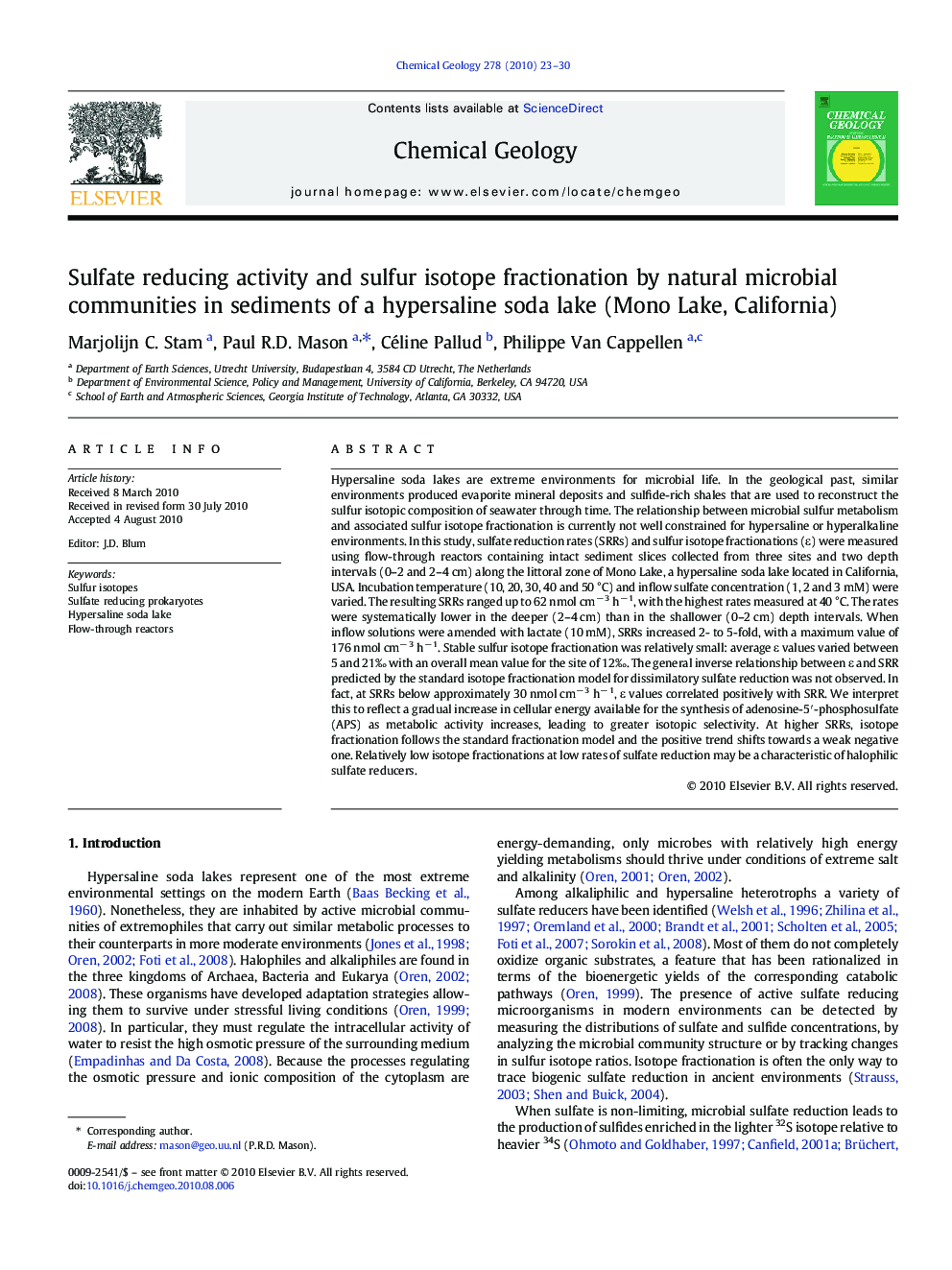| کد مقاله | کد نشریه | سال انتشار | مقاله انگلیسی | نسخه تمام متن |
|---|---|---|---|---|
| 4699984 | 1637680 | 2010 | 8 صفحه PDF | دانلود رایگان |

Hypersaline soda lakes are extreme environments for microbial life. In the geological past, similar environments produced evaporite mineral deposits and sulfide-rich shales that are used to reconstruct the sulfur isotopic composition of seawater through time. The relationship between microbial sulfur metabolism and associated sulfur isotope fractionation is currently not well constrained for hypersaline or hyperalkaline environments. In this study, sulfate reduction rates (SRRs) and sulfur isotope fractionations (ε) were measured using flow-through reactors containing intact sediment slices collected from three sites and two depth intervals (0–2 and 2–4 cm) along the littoral zone of Mono Lake, a hypersaline soda lake located in California, USA. Incubation temperature (10, 20, 30, 40 and 50 °C) and inflow sulfate concentration (1, 2 and 3 mM) were varied. The resulting SRRs ranged up to 62 nmol cm− 3 h− 1, with the highest rates measured at 40 °C. The rates were systematically lower in the deeper (2–4 cm) than in the shallower (0–2 cm) depth intervals. When inflow solutions were amended with lactate (10 mM), SRRs increased 2- to 5-fold, with a maximum value of 176 nmol cm− 3 h− 1. Stable sulfur isotope fractionation was relatively small: average ε values varied between 5 and 21‰ with an overall mean value for the site of 12‰. The general inverse relationship between ε and SRR predicted by the standard isotope fractionation model for dissimilatory sulfate reduction was not observed. In fact, at SRRs below approximately 30 nmol cm− 3 h− 1, ε values correlated positively with SRR. We interpret this to reflect a gradual increase in cellular energy available for the synthesis of adenosine-5′-phosphosulfate (APS) as metabolic activity increases, leading to greater isotopic selectivity. At higher SRRs, isotope fractionation follows the standard fractionation model and the positive trend shifts towards a weak negative one. Relatively low isotope fractionations at low rates of sulfate reduction may be a characteristic of halophilic sulfate reducers.
Research highlights
► Relatively small amounts of sulfur isotope fractionation associated with microbial sulfate reduction in hypersaline soda lakes
► New relationship found between sulfate reduction rates and sulfur isotope fractionation under hypersaline conditions
► Reflects a gradual increase in cellular energy available for the synthesis of adenosine-5′-phosphosulfate (APS) as metabolic activity increases.
Journal: Chemical Geology - Volume 278, Issues 1–2, 1 November 2010, Pages 23–30